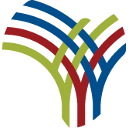Nairobi — Global digital health leaders are urging African governments to equip Community Health Workers (CHWs) with digital health solutions to combat high child mortality rates across the continent.
Despite a 59 percent reduction in under-five mortality in East and Southern Africa over three decades, the region still records approximately 2,700 child deaths daily, making it the second-highest globally as of 2022.
At the Global Digital Health Forum (GDHF), held for the first time in Africa, leaders from Living Goods, the Children's Investment Fund Foundation (CIFF), and the private sector highlighted the critical role of CHWs in improving health outcomes.
Kanishka Katara, Chief Digital Health Officer at Living Goods, emphasized the transformative potential of digital health tools:
"By equipping CHWs with digital tools, we can enhance healthcare access, reduce child mortality, and build resilient, sustainable health systems in remote, low-resource settings," he said.
Gift Kiti, Senior Analyst for Tech for Impact at CIFF, underscored the importance of investing in community health to advance child health and ensure equitable healthcare access for marginalized populations.
While the World Health Organization (WHO) reports global under-five deaths fell from 12.6 million in 1990 to 5 million in 2020, sub-Saharan Africa continues to suffer the highest rates of child mortality.
In Kenya, the 2022 Demographic Health Survey revealed an under-five mortality rate of 41 deaths per 1,000 live births, with malaria being a leading cause.
A five-year digital health project launched by Living Goods in Busia County demonstrated the effectiveness of digital tools.
The initiative increased malaria testing coverage from 51 percent to 75 percent and improved same-day diagnosis and treatment rates from 9 percent to 59 percent, significantly reducing child disease and mortality.
These efforts underscore the potential of technology-driven solutions in achieving equitable and sustainable healthcare outcomes across Africa.


